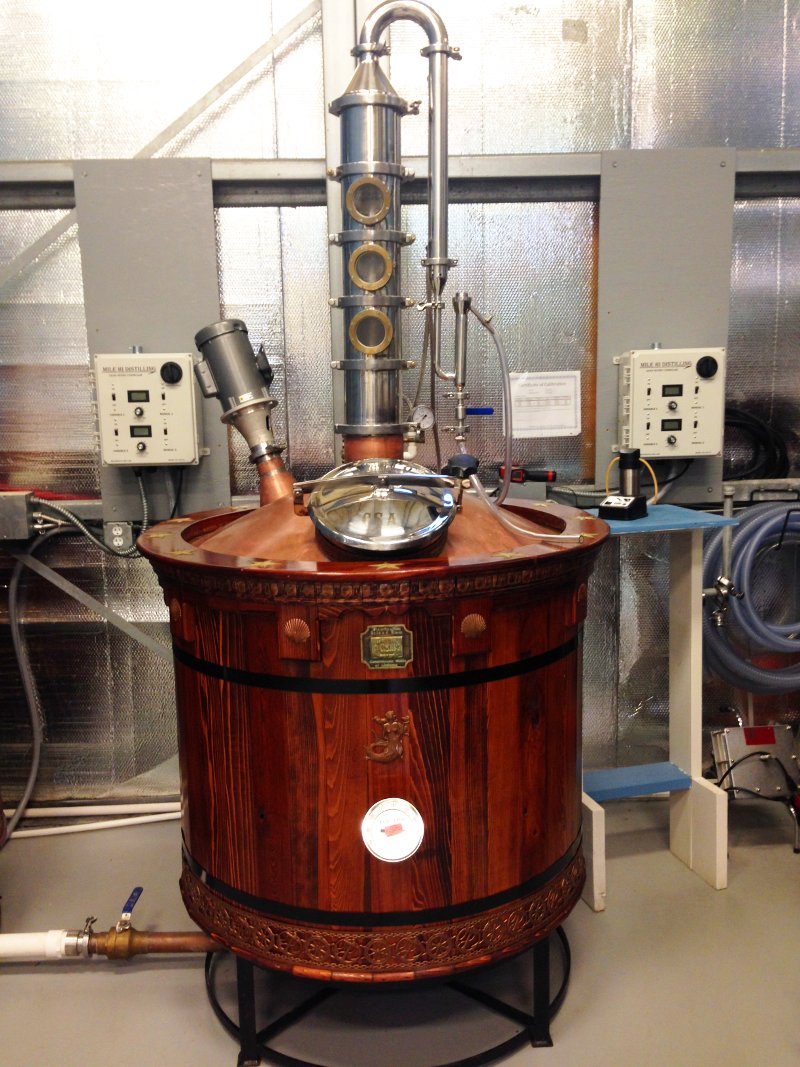Daufuskie Island Rum Company
South Carolina
...actually the interview was not his, but was done by his equally talented wife. The "interview" was the usual simplistic puff piece, but I did feel it worthwhile to attempt to get some actual detail by contacting the distillery directly. Ergo, my usual, low expectations letter, when to my usual surprise got a quick reply and plenty of good and informative data. Here goes:
"Capn Jimbo,
Thanks for the email and I am glad you enjoyed the interview. I will attempt to answer your questions in Blue below. I hope my responses are helpful.
Thanks again,
Tony Chase"
1. I'm a bit confused in the raw material. Early in the interview you state "All of our rums have Demerara sugar as the base, much like El Dorado in Guyana" - but - later you state:
"That said, we take great pains to make sure that everything that touches our rum is made in the US A. From the bottle to the synthetic cork top, to the label and most importantly, the sugar.".
Ergo my question: is the sugar Demeraran, or American? Brown, or white, grade.
Demerara is actually a strain of sugar that originated in Guyana (in the Demerara region) and is a golden color with a hint of molasses in it. It is grown in South Florida. So, it has it's origins in Guyana, but is grown in the US.
2. This naturally leads to the question: are you using sugar, molasses or cane juice as the basis for fermentation? How is the base fermented, with what, and for how long?
Some distillers are quite proud of the yeasts they use, and why (eg the use of wild yeast and dunder in Jamaica is common).
This "raw" Demerara sugar is the basis for our fermentation. Each fermentation starts with 600lbs of Demerara and 300 gallons of water giving me approximately a 20% w/w sugar concentration. Currently, we are using a commercially available yeast, but will spend significant time researching the development and promulgation of our own yeasts.
That will be fun for me, as I am a retired pharmacist, and the microbiology and organic chemistry will be fun challenges. Our fermentations are open air vats made from cypress (grown in Louisiana) and they ferment for 5 days.
Please understand that the Rum Project was designed for true rum afficianados, who like the lovers of fine single malts or bourbons, are quite knowledgable of process, cooperage, fermentation, distillation, etc. We are not talking jello shots here, lol... so next:
3. We'd love to know how your rums are distilled. Pot, modified pot (eg short column), Coffee, etc. It is typical to ask also to what percentage, how you approach your cuts, are heads or tails recycled, use of thumpers. Our readers love detail and largely understand what can be expected.
I have attached a picture of one of our "twin" stills. They are a modified copper pot still (wood covered) with a short column and a capacity of 150 gallons. After many distillations, we have settled on a process that is working well for us and lends itself to a full body rum.
We remove approximately a half gallon of heads per 150 gallon still and distill at a steady temperature of 190 degrees F, after pausing for a period of time at about 170 to 175. The distillation run is allowed to continue until the hydrometer reading is at 45% ABV.
At that point, (probably a waste of potentially good product), we discontinue the distilaltion and the remaining content (tails and all) is discarded. I want to avoid the fusel oils and their greasy "feel".
4. Your cooperage is typical, eg used bourbon barrels. The usual questions here are the size of barrels, fill (first, second, third), reuse, et al.
We ONLY use 53 gallon Woodford Reserve Doubled Oaked Bourbon barrels. By definition, these barrels are virgin American oak when Woodford fills them. They are heavy toasted and lightly charred barrels. The one we use is the "second barrel" in the process and it was only used for 6 months. The hallmark of our Gold Rum is that it rests in these barrels for 6 months and it picks up some of the bourbon flavor as an undertone. Fearing that I cannot repeat the process identically again, we use the barrel one time.
Best regards,
Capn Jimbo
> http://rumproject.com/rumforum/
Verrrrrrry interesting. I'll shortly post a picture of their 150 gallon, wood sheathed copper stills (very attractive). Their website is worth a quick visit. Like so many new artisan operations their focus remains on young white rums, supplanted by a number of what they consider unique infused, spiced versions. They are also considering a cane (sugar) based vodka.
One comment for now: of the three raw materials: cane juice, molasses. brown sugar and ordinary white table sugar, the last - Daufuskie's material - the sugars are considered having the least potential flavors. This is worth a follow up, as is the claimed final distillation to just 45%. Most pot still stripping runs tend to go - at least - to around 65-70%.
I do take this gentleman at his word, and if I am understanding him correctly, yes, he IS taking just the heart of hearts of hearts. I'd urge anyone to find, try and report on this one.
*******
http://www.daufuskierum.com/

